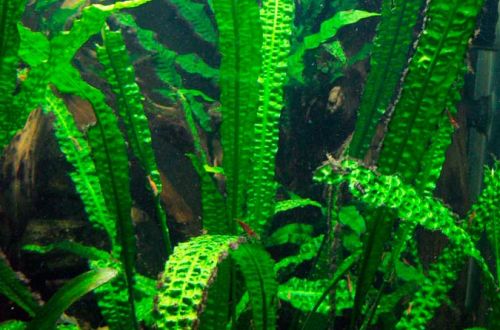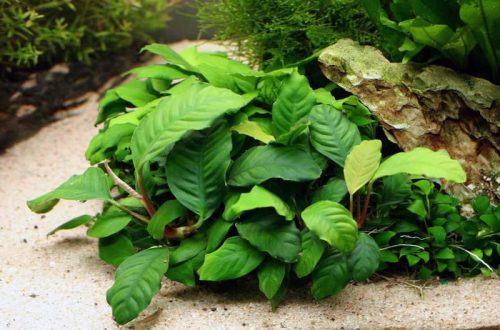
Cryptocoryne aponogetonolifolia
Cryptocoryne aponogetifolia, scientific name Cryptocoryne aponogetifolia. Such an unusual name, combining two completely different types of plants, is explained by the fact that, due to the structure of the leaves, it outwardly resembles Boivin’s Aponogeton. Comes from Southeast Asia. The natural habitat is limited to the Philippine islands of Luzon, Panay and Negros. It grows completely submerged in fast-flowing rivers and streams, where it forms dense clumps. It has been used in the aquarium trade since the 1960s.

The plant forms a large bush with long lanceolate leaves of light green color, growing up to 50–60 cm. The surface of the leaf blade is uneven, tuberous, corrugated. The latter definition reflects the structure of the leaf to a greater extent. A dense network of fibrous root system is able to reliably hold the plant in a strong current. Until 1983, it was believed that Cryptocoryne aponogetonolista had a broader-leaved variety with a reddish undersurface, but botanist Josef Bogner proved that this was a completely different species, which was later named Cryptocoryne usteriana. Both names are often used interchangeably in sales. Buying a mistake will not lead to problems because the plants have similar maintenance requirements.
It is considered an unpretentious hardy species. Unlike most Cryptocorynes, its leaves do not attract herbivorous fish, and its ability to grow in a harsh alkaline environment allows it to be used in aquariums with cichlids from Malawi and Tanganyika. Due to the large size of the bushes, it is only suitable for large tanks.




